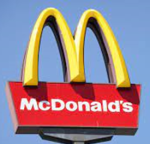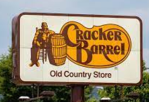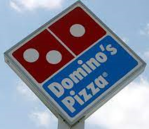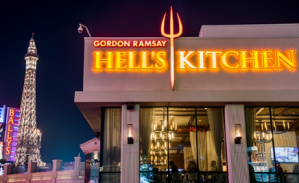

Thousands of dollars are spent every year by parents trying to help their children find and get into the right college. This can be overwhelming as there are over 4,300 higher education institutions in the U.S. alone. Thankfully, there are organizations that help us to group universities by type that should make college selections easier. For example, the Carnegie Classification in addition to the >20 U.S. college ranking systems provide categorizations that supposedly reduce the complexity of the college decision. Unfortunately, most parents do not understand the difference among even the most well-known college rankings including the WSJ/THE (Wall Street Journal/Times Higher Education), USNWR (U.S. News Rankings), or QS Rankings (World University Rankings) nor the Carnegie Classifications of Doctoral, Doctoral High Research, and Doctoral Very High Research Activity.
Unfortunately (or maybe fortunately,) we don’t shop for colleges very often in our lives – once for us and for each of our children. Thus, making what we perceive as the “right” decision can be overwhelming. However, what most of us do know about are the places we like to go out to dinner. Even though there are >132,000 registered chain restaurants in the U.S., when we mention McDonalds, Ruby Tuesdays, Dominoes, or a local dive, most of us have definitive reactions and opinions on where we want to eat.
In light of our relatively comprehensive awareness of types of restaurants in our nation, I have created a university categorization system based on types of restaurants.

1. Fast Food – McDonalds, Subway, Taco Bell, and Burger King
Higher Ed. Equivalent – Community Colleges
These four fast food establishments have the highest number of stores in the U.S. (all have >7,000 stores) and are also some of the low-priced places to eat. You can find multiple stores of any one of these chains in any town. Their higher education equivalents are community colleges, of which there are ~1,500 institutions.
Community colleges have the lowest costs in higher education in part because they are supported by not only the state, but also the local community, and do not invest in many of the amenities 4-year universities do.

2. Casual Dining Chains – Applebee’s, Chili’s, Ruby Tuesdays
Higher Ed Equivalent – Regional Public Institutions
These chains are found in almost every state, if not any town, of over 20,000 people. They cost more than fast-food restaurants but not as much as many other restaurants. Their higher education equivalents are the regional public institutions in each state. Examples of regional publics include Texas State, Appalachian State, and James Madison.

3. Family Dining Chains – Cracker Barrel, Golden Corral, Denny’s
Higher Ed Equivalent – Land Grant Institutions
These chains are popular with almost everyone because of their big menus offering lots of foods. These are the restaurants where socio-economic status does not matter and the whole family is comfortable eating. The prices are reasonable and most everyone has a good time. Their higher education equivalents are land-grant institutions (only publics) that offer a wide range of practical and relevant majors in addition to a robust social life. Examples include Texas A&M, N.C. State, and Virginia Tech. Check here for a full list of the nation’s land grant colleges.

4. Higher-End Chains – Outback, Olive Garden, Bonefish Grill
Higher Ed Equivalent – Flagship Universities
These are the chains that are not often found throughout the state, but typically only in key cities where visitors are willing to make a reservation and pay a little more than most restaurants. Their higher education equivalent are the top 1 or 2 institutions in each state where anybody can attend, but only if they can be admitted and pay the tuition. Examples of flagship institutions include the U. of Virginia, U. of North Carolina, and the U. of Texas. See here for definition of flagship institutions.
If you haven’t noticed, many of my university examples come from the four states where I have lived the longest and where I am most comfortable making these identifications.

5. Healthy Chains – Panera, Sweetgreen, Chopt
Higher Ed Equivalent – Religiously-Affiliated Institutions
Eating healthier has become more important in the past 30 years and while not everyone is attracted to healthy eating options, there is a distinct portion of people seeking it out. Their higher education equivalents would be the hundreds of religiously affiliated institutions, which claim to be better at teaching students morals and developing character. Examples include Yeshiva (Jewish), Wheaton (Evangelical), Notre Dame (Catholic) and Brigham Young (Mormon).

6. Delivery/Pick-Up Restaurants – Dominos, Papa John’s, Little Caesar’s
Higher Ed Equivalent – Online Institutions
Pizza chains dominate the delivery options. These chains allow to wear what you want in the comfort of your home. Their higher education equivalents are non-profit online universities that serve students wherever they want to take classes. Examples include Western Governor’s, National, and Southern New Hampshire.

7. Restaurants in U.S. with Michelin Star
Higher Ed Equivalent – Top Liberal Arts Institutions
While most of us might not know a restaurant with a Michelin star, there are ~230 of these restaurants with this distinction. They only seem to be located in 5 places – California, Florida, New York, Illinois, and Washington, D.C. Their higher education equivalents are the prestigious liberal arts private universities where many wealthy families seek to send their children. Examples of top liberal arts colleges include Williams, Amherst, Pomona, and Swarthmore. Similar to restricted locations for Michelin Star restaurants, over half of the top liberal arts colleges in the U.S. are in the northeast region.

8. Famous Stand-Alone Restaurants – Le Bernadin (NYC), Hall’s Chophouse (SC), Hell’s Kitchen (NV), GW Fins (LA)
Higher Ed Equivalent – Top 10 Private Institutions
There are a group of restaurants considered the best in the nation. I have never eaten at any of them, but I have heard about some of them. Similarly, most of us did not attend Harvard, Yale, MIT, or Stanford, but we have heard about them.
I hope that when you found the category of the restaurant (#1-#8) that brings you the most joy, the corresponding higher education institution group was one that would be a good fit for you. No matter what, it is a fun way of thinking through another way to pick colleges based on their restaurant equivalent.
